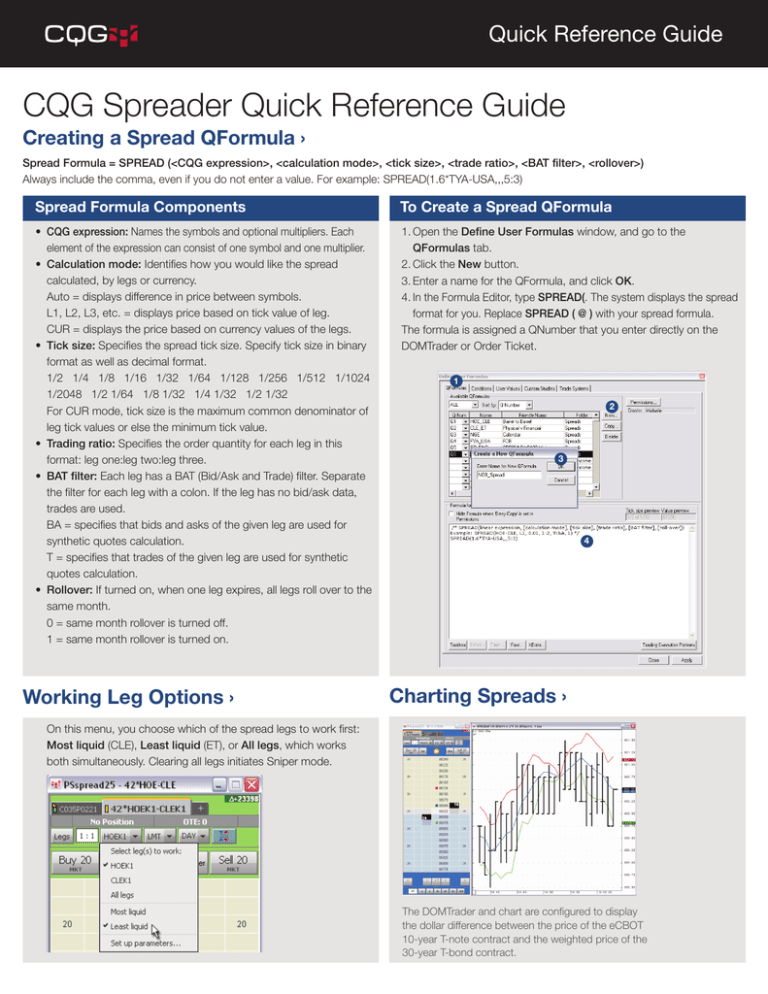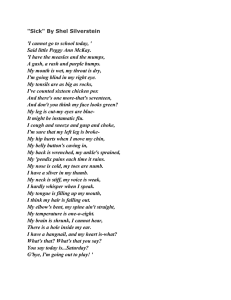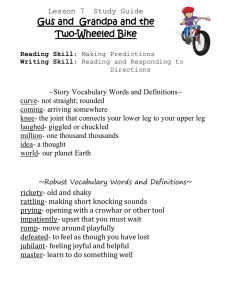
Quick Reference Guide
CQG Spreader Quick Reference Guide
Creating a Spread QFormula ›
Spread Formula = SPREAD (<CQG expression>, <calculation mode>, <tick size>, <trade ratio>, <BAT filter>, <rollover>)
Always include the comma, even if you do not enter a value. For example: SPREAD(1.6*TYA-USA,,,5:3)
Spread Formula Components
To Create a Spread QFormula
• CQG expression: Names the symbols and optional multipliers. Each
element of the expression can consist of one symbol and one multiplier.
• Calculation mode: Identifies how you would like the spread
calculated, by legs or currency.
Auto = displays difference in price between symbols.
L1, L2, L3, etc. = displays price based on tick value of leg.
CUR = displays the price based on currency values of the legs.
• Tick size: Specifies the spread tick size. Specify tick size in binary
format as well as decimal format.
1/2 1/4 1/8 1/16 1/32 1/64 1/128 1/256 1/512 1/1024
1/2048 1/2 1/64 1/8 1/32 1/4 1/32 1/2 1/32
For CUR mode, tick size is the maximum common denominator of
leg tick values or else the minimum tick value.
• Trading ratio: Specifies the order quantity for each leg in this
format: leg one:leg two:leg three.
• BAT filter: Each leg has a BAT (Bid/Ask and Trade) filter. Separate
the filter for each leg with a colon. If the leg has no bid/ask data,
trades are used.
BA = specifies that bids and asks of the given leg are used for
synthetic quotes calculation.
T = specifies that trades of the given leg are used for synthetic
quotes calculation.
• Rollover: If turned on, when one leg expires, all legs roll over to the
same month.
0 = same month rollover is turned off.
1 = same month rollover is turned on.
1.Open the Define User Formulas window, and go to the
QFormulas tab.
2.Click the New button.
3.Enter a name for the QFormula, and click OK.
4.In the Formula Editor, type SPREAD(. The system displays the spread
format for you. Replace SPREAD ( @ ) with your spread formula.
The formula is assigned a QNumber that you enter directly on the
DOMTrader or Order Ticket.
Working Leg Options ›
1
2
3
4
Charting Spreads ›
On this menu, you choose which of the spread legs to work first:
Most liquid (CLE), Least liquid (ET), or All legs, which works
both simultaneously. Clearing all legs initiates Sniper mode.
The DOMTrader and chart are configured to display
the dollar difference between the price of the eCBOT
10-year T-note contract and the weighted price of the
30-year T-bond contract.
Quick Reference Guide
Setting Messaging Parameters ›
These parameters help mitigate messaging:
• Min Size Increment: Tells the system to modify a working order
quantity only if the quantity available in the monitored leg increases
by at least n. This parameter minimizes transaction count and is
applied to the working order only when the monitored available
quantity increases less than n. The working order size is always
modified down on a decrease when the available quantity on
the monitored market decreases. Choose between lots and
percentage.
Allowed values = 1 to 9999.
Default = 1 lot.
• Active Price Range: Defines the range (from best bid/best offer,
whichever is closest) where orders are actively worked in
price increments.
• Range Size: Uses the following values to define the range.
Default = do not override the server setting.
Any = no limit.
0 = work the order if on best bid/best offer only.
1-10, 20, 30 = price increments from best bid/best offer where orders
will be worked or modified.
• Order Action outside active range: Determines how working legs
that are far from best bid/best ask are handled by the Spreader
system. A working leg order is considered far from best bid/ask by
the number of price increments specified in the Active Price Range
field.
Default = do not override server settings.
Cancel working leg = cancels leg immediately if outside of range.
Work leg, periodically update = keep the order wherever it is and
move it only when the time comes for a periodic update (set in the
Periodic Force Update field).
Work leg, periodically update, and actively move away from MKT =
keep the order wherever it is, but move the order away from the market
every time it should be adjusted away, and do periodic updates to the
order to move it closer to the best bid/ask when necessary.
• Min Price Change: Updates the working leg order price in price
increments/ticks. The Spreader system ignores any price changes
that are smaller in price increments/ticks than this value.
Default = do not override the server setting.
1–3 = changes in price increments.
• Periodic Force Update: Applies a period of updates to the working
leg order in seconds, such that every n seconds, the leg is put where it
ought to be placed based upon current prices.
Default = do not override the server setting.
1, 5, 10, 30, 60, 300, 600 = number of n seconds chosen.
Quick Reference Guide
Setting Trading Parameters ›
• Color: Determines the background color of the trading window.
• Overfill Management: Specifies how to manage overfills.
No selection: Indicates that the trader manages the overfill and
that the system should take no action.
Auto Hedge Overfills: Indicates that when either the working or
leaning leg is overfilled, the system should try to maintain the leg ratio.
Avoid Overfills: Indicates that the system should minimize the
chance for an overfill to occur by working legs less aggressively.
• Ignore partial fills in price discovery: Indicates that the system
ignores fill prices on the primary order.
• Size: Indicates the size of each leg as determined by leg ratio setting.
• Work: Indicates which leg to work — one, all, or neither.
• Volume Multiplier: Determines size of working orders based on a
percentage of resting volume available in queue of monitored leg.
• Work Threshold: Tells system to work order and if and only if
available quantity in monitored leg is and remains greater than
this value. The system works order only for quantity that exceeds
this threshold.
• Min Size Increment: Tells the system to place an order only if
the quantity available in the monitored leg is at least this much
and to modify a working order only if the quantity available in the
monitored leg increases by at least this much.
• Trigger: Used with ratio spreads. Indicates how many contracts
(lots or percent) should be filled before second leg order is placed.
• Min and Max Number of holders: Sets minimum and maximum
number of orders to include in queue.
• # of levels: Indicates how many price levels to skip between orders
in queue.
• Order size restore threshold: Indicates how far the market should
run before maximizing size of a recently placed order that is now
part of the group of stacked orders. The size of the working order
is based on the currently available size in the monitored leg and the
size of the orders in the group of stacked orders at the maximum
order size. This setting overrides that system behavior in order to cut
down on messaging.
• Replace order to complete strategy by using selected
method below: Determines whether the system should react
to incomplete orders. Used with trailing limits and payups
to determine how incomplete orders should be handled (the
incomplete strategy). If not selected, the system does nothing.
• Execute incomplete strategy if order is not filled in this many
seconds: Indicates the amount of time that must elapse from
acknowledgement before the incomplete strategy is executed.
It allows you, for example, to wait a second to see if the market
comes back.
• Allow leg to slip this number of ticks: Indicates the maximum
number of ticks of slippage for the incomplete strategy. Can be a
positive or negative value.
Trailing Limit, same side = Places a trailing limit order that
tracks the same side as the incomplete order.
Trailing Limit, opposite side = Places a trailing limit order that
tracks the opposite side of the incomplete order.
Payups = Replaces the original limit order to complete the
spread with a limit order that has the price adjusted based on
number of slip ticks.
• Monitor leaning DOM volume to determine when to replace
order: Determines whether the system should monitor leaning
DOM volume. The condition chosen from the list below must be
met before the unfilled order is modified (either payup or trail it).
• Volume or volume ratio threshold: Determines whether the
system should monitor leaning DOM volume. This condition must
be met before the unfilled order is modified (either payup or trail it).
DOM Volume = Uses the threshold parameter as an absolute
volume. When the leaning leg volume available at the exchange
(best bid/ask, as appropriate for a leaning sell/buy order) drops
below this specified volume, then the system performs a payup
(replaces the original limit order to complete the spread with a
limit order that has the price adjusted based on specified number
of slipped ticks) or a trailing limit.
DOM Volume relative to order size = Uses the threshold
parameter as a volume ratio.
DOM ratio between best bid/ask = Uses the threshold
parameter as a volume ratio. When the ratio between volumes
available at the exchange (best bid/ask for a leaning sell order,
best ask/bid for a leaning buy order) falls below the specified
ratio, then the system performs a payup (replaces the original
limit order to complete the spread with a limit order that has the
price adjusted based on specified number of slipped ticks) or a
trailing limit.
www.cqg.com | spreadersupport@cqg.com | 1-800-748-3582 | 1-800-525-1085
© 2012 CQG, Inc. All rights reserved worldwide.





